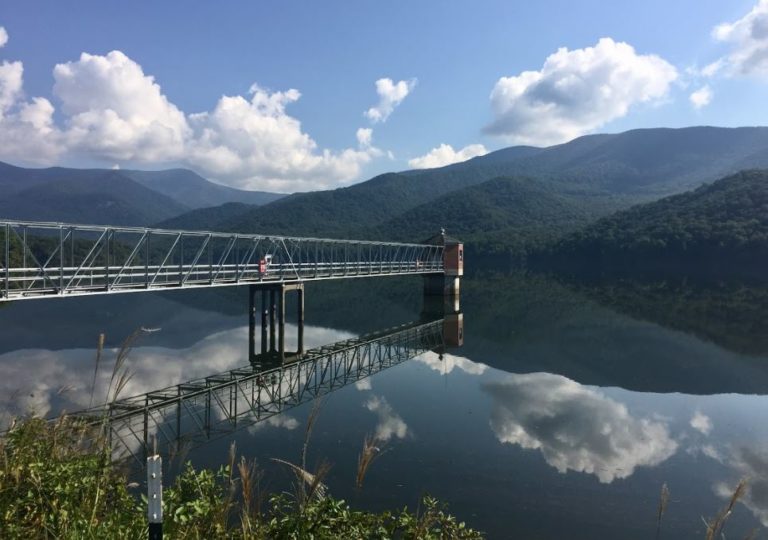Maintaining a pristine water source means more than managing the North Fork Reservoir itself. It extends to managing the 20,000 acres of forested watershed that surround the North Fork and Bee Tree reservoirs.
A carefully crafted series of controlled burns will happen on the watershed over the course of coming years, beginning in February.
The controlled burns are designed to clear out accumulated dead wood, leaf litter and shrubbery that could pose as tinder for a catastrophic wildfire. There is also an abundance of fuel on the ground from dead hemlocks, decimated in the recent past by the Hemlock woolly adelgid.
This will be the first controlled burn on this closely protected watershed where no recreation or public access is allowed.
“The burn has been approved through the U.S. Forest Service and they will fund it, while the N.C. Forest Service will lay the groundwork and manage the sites” said Watershed Manager Lee Hensley. “U.S. Forest Service lands border our property and that qualifies us for the funds.”
When burns are happening smoke may be visible from the Blue Ridge Parkway and other local areas. Included in the many stringent guidelines prior to any planned burn, the N.C. Forest Service checks with WNC Air Quality to ensure burns are done under best air quality conditions.
Nearby neighbors may smell smoke but the Forest Service will do the controlled burns in such a way that mitigates smoke and any fire danger. Foresters will burn off blocks within the network of existing forest roads that act as natural fire breaks. The burns could range from 5 acres to 500 acres.
“We can’t take the chance of having nature take its course on the watershed,” said Leslie Carreiro, Water Production/Quality Division Manager. “This is a water quality issue.”
By carrying out prescribed burns, foresters can control the intensities of managed fires and thus accomplish fuel reduction and regeneration objectives simultaneously.
There is a known natural cycle of a forest growing and burning. Some species need the high temperatures of the burn for the seeds to open.
As part of a 2014 agreement with the Conservation Trust of North Carolina, local college students inventoried many areas of the watershed. The Baseline Study report that came out of the agreement recommended prescribed burning for forest health. The City is planning to partner with one of the local colleges or nonprofits to perform a follow-up to the study later in the year after the burn.
Areas 3,600 feet and below in elevation, roughly ⅓ of the watershed acres will be burned over a period of years. Some areas may not be burned at all.
